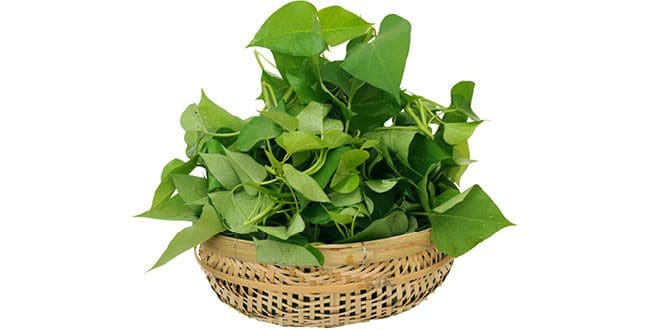By naturopath Victoria Taylor
Sweet Potato leaves
Markets tried marketing these a few years ago but it seems there was not a big uptake so they left it to me to spread the word on this valuable resource .
We all now know the familiar sweet potato tuber but now is the time to become aquainted with the leaves as a very beneficial family vegetable that is accessible to all, even those in units – with or without a balcony.
A study conducted by the University of Louisiana shows the leaves are rich in Vitamin C (especially young leaves). Riboflavin (B2) is present and significant amount of Vitamin B6, higher than the amount available from the tubers and compares well with fruits and vegetables such as broccoli, avocados, carrots, bananas, and cauliflower.
Nutrition Data lists additional nutrients as Vitamin E, Niacin and Phosphorus, Vitamins A, K, Folate, Magnesium, Potassium and Manganese.
100gm of leaves contain 6 gms of carbohydrate and 2 gms fibre, making them a valuable low carb vegetable source.
Sweet potato is not of the nightshade family and so is far less likely to induce the arthritic symptoms often experienced by potatoes and potato leaves are not edible.
Of course there is a downside for those living in cooler climes as the vine is susceptible to frost and very cold mornings.
Store the tuber in a pot with quite dry soil over winter and then fertilize and water like crazy once spring comes to get an early start.
They enjoy lots of sunshine and will withstand strong western sun provided there is sufficient water.
A hanging container makes a lovely edible on a balcony, in a sunny bathroom or kitchen as well as being planted in the garden.
They respond well to pruning so add them to as many meals as you can think of – from green smoothies, omelettes, soups, casseroles, stir fries , and most meals have a place for this wonderful unsung hero of the vegetable world.
Never know, it may become the new kale and because it is not as intensely flavoured, in fact its flavour is quite mild.
It’s outstanding value for me is that it is free food and sooooo easy to grow in most areas!









Leave A Comment